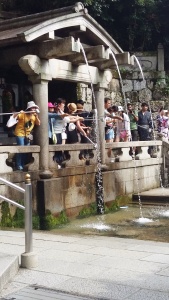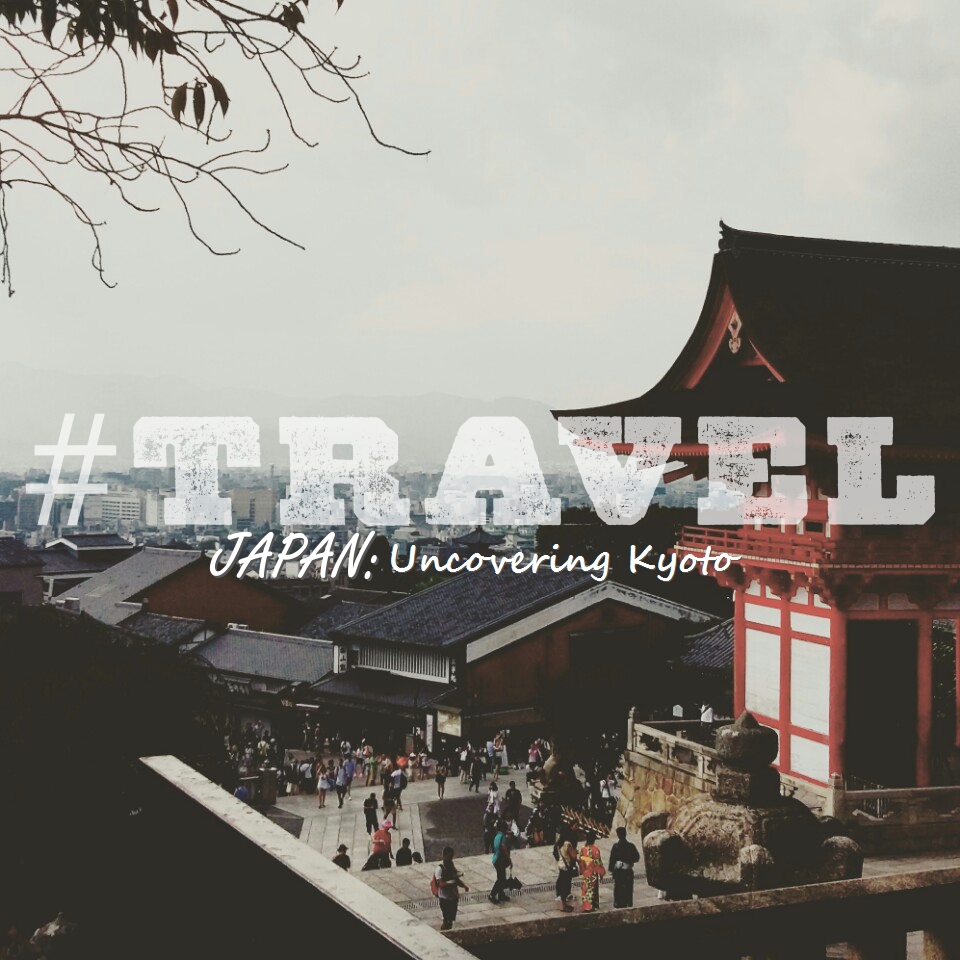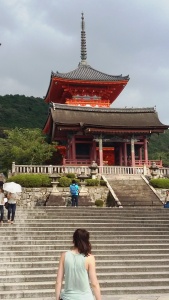A visit to Kyoto has been on my to-do list for well over a decade now, so when I finally had the opportunity to go in 2015, I was absolutely thrilled. Admittedly, my first impression of Kyoto was far from ideal: my hostel was located along a six-lane highway with a marvelous view of concrete overpasses in either direction. However, it didn’t take long to discover that hidden amongst the high-rises and expressways were areas simply brimming with Kyoto’s earliest history and culture.

Far from the neon streets of Tokyo, the neighborhoods of Kyoto emerged from a settlement dating back thousands of years, and as such each winding road crackles with a deep sense of character. Hiding behind offices and storefronts are countless shrines and temples, often in small clusters that offer a serene escape from city life.
The sector known as Higashiyama—nestled in the mountains and running alongside the Kamo River—houses some of the most famous and most visited temples in the country. Chief among them is Kiyomizu-dera, a massive Buddhist temple known for its large veranda overlooking the treetops, supported by massive pillars and built without the use of a single nail. The temple itself diverts a small natural waterfall known as Otowa-no-taki into three small streams that pitch over a narrow balcony into a pond below. Visitors shuffle through ever-growing lines to reach out long tin cups under the stream of their choice in hopes that drinking the water will grant them wisdom, health, or longevity.
While Kiyomizu itself is a fairly immense temple complex to explore, the journey to the front gate is an adventure all its own. The area leading up to the entranceway is on a steep slope, with the main road being a walking market filled with every souvenir one could hope to find. Rather than having shop after shop offer the same array of knick-knacks, this market also holds many specialty shops for those looking to browse handmade fans, wall scrolls, or bamboo goods. Interspersed with both high- and low-end shops are many cafes and ice cream stands. I was lucky enough to stumble upon this area under a blistering sun on a day temperatures reached a sweltering 102 degrees, and so an ice cream break quickly became a necessity. One could safely order basic chocolate or vanilla or delve into more adventurous flavors like red bean, sweet potato, or (my personal favorite) green tea.

Beyond Kiyomizu, there are plenty of other temples well worth a visit:
>Tofuku-ji: A 24-temple complex known for stunning landscapes containing moss and rock Zen gardens
>Kennin-ji: The city’s oldest Zen temple boasting intense murals of dragons on its ceiling
>Yasaka: A massive shrine footed by cherry blossoms and filled with paper lanterns, Yasaka is known for its traditional New Year’s celebrations
After a day of exploring the living history of Japan it’s only natural to crave a little modern fun. Don’t think that Kyoto is a town forgotten in time—even in Higashiyama you’ll find an active nightlife. All along the Kamo River you’ll find quirky restaurants and bars catering to every type of crowd imaginable while sharing the same serene waterfront views. If you’re seeking a more authentic Japanese experience Higashiyama is also home to Gion, Kyoto’s famous Geisha district, where in addition to bars and nightclubs one will also find teahouses and traditional shows.
Higashiyama is one of Kyoto’s smallest and least populous sectors and yet is teeming with adventure—there is clearly much more to this city than I’d ever anticipated.
– Ashley
Going to Japan? Check this out –







Great pictures! I hope I can visit Japan someday.
http://reasyume.wordpress.com
LikeLiked by 2 people
Thanks. You will not regret it.
LikeLike
Oh I want to go there! I am just reading the book Memoirs of a Geisha, for the second time…
LikeLiked by 1 person
I should read that book
LikeLiked by 1 person
definitely, a great read!
LikeLike
Kyoto, my all time favorite 🙂
LikeLiked by 1 person
I can see why.
LikeLike
My favourite city in Japan. But you missed Kinkaku-ji! The golden temple. You’ll have to go back and see it next time 😉
LikeLiked by 1 person
Thanks. I will have to!
LikeLike